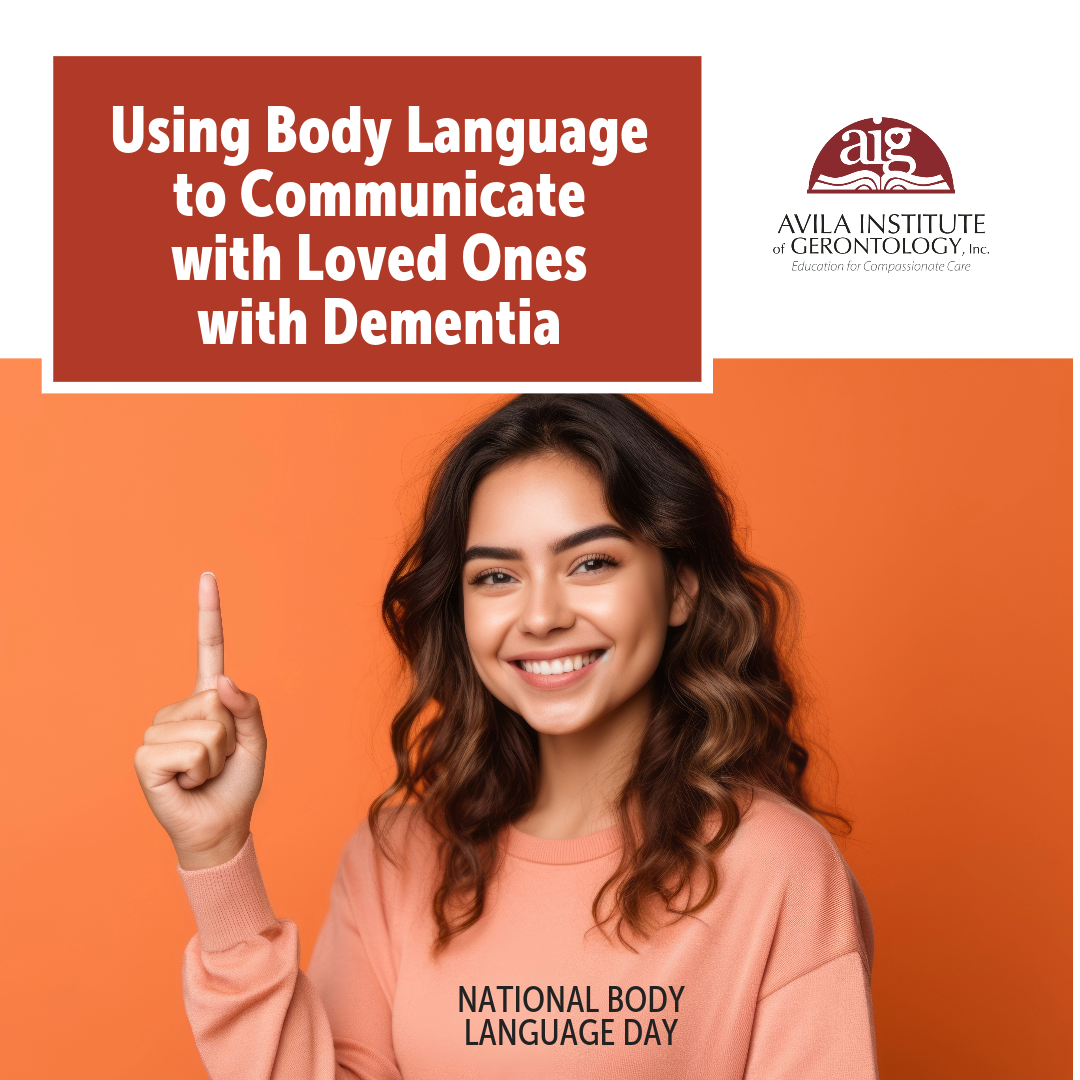
Body Language- The Universal Form of Communication
Body language is a universal form of communication, and while it varies somewhat across cultures, many aspects of non-verbal communication are innate and understood by people worldwide. Understanding and effectively using body language can enhance interpersonal relationships, improve communication, and aid in interpreting the thoughts and emotions of others.
This holds especially true for people living with dementia. Dementia is a progressive cognitive impairment that affects memory, communication, and behavior. Since verbal communication can become challenging as the condition progresses, non-verbal cues like body language play a crucial role in improving the quality of care and the overall well-being of residents with dementia.
Here are some key reasons why body language is important for residents with dementia:
- Communication: People with dementia often have difficulty expressing themselves verbally or understanding complex language. Using appropriate body language can help convey messages, emotions, and intentions more clearly. Simple gestures, facial expressions, and body movements can assist in getting the message across.
- Emotional Connection: Dementia can lead to feelings of confusion, anxiety, and frustration. Non-verbal cues like a smile, a reassuring touch, or a gentle pat on the back can provide emotional comfort and help establish a positive emotional connection with caregivers.
- Reducing Agitation: People with dementia may become agitated due to various triggers, such as unfamiliar environments or routines.
Care Partners can use their body language to convey calmness and reassurance, which can help reduce agitation and anxiety. - Enhancing Trust: Trust is essential in caregiving, and residents with dementia often rely on their care partners for support and safety. By maintaining consistent and non-threatening body language,
one can build trust and a sense of security in their residents. - Improving Understanding: People with dementia may have difficulty processing and retaining information. Using visual aids, gestures, and body language can aid in conveying information more effectively and improving comprehension.
- Encouraging Participation: Engaging in activities and daily routines can be challenging. Using non-verbal cues such as hand gestures or body movements can encourage them to participate and cooperate in various activities.
- Respecting Personal Space: People living with dementia may have varying levels of comfort with personal space. Being attuned to their body language can help care partners
respect their boundaries and avoid causing distress. - Assessing Needs: Since people living with dementia may struggle to articulate their needs and discomfort, caregivers must rely on visual cues to assess their well-being. Body language can help identify signs of pain, discomfort, hunger, or thirst.
- Fostering Independence: Encouraging residents to perform tasks independently is essential for their well-being.
Care Partners can use body language to provide guidance and support while allowing residents to maintain a sense of autonomy. - Preventing Misinterpretation: People living with dementia may misinterpret verbal communication or become confused easily. Clear and consistent body language can reduce the risk of misinterpretation and prevent unnecessary distress.
Helpful Body Language Cues
As we can see, using helpful body language cues when interacting with people living with dementia can significantly improve communication, reduce agitation, and foster a positive and supportive environment. Here are some key body language cues to keep in mind:
- Maintain Eye Contact: Gently maintain eye contact to show attentiveness and engagement. However, be mindful not to stare, as this can be perceived as threatening or intimidating.
- Smile: A warm, genuine smile can convey friendliness, approachability, and a positive mood. It can help put the person with dementia at ease and create a sense of comfort.
- Use Open and Relaxed Posture: Stand or sit with an open and relaxed posture. Avoid crossing your arms, as this can come across as defensive or unapproachable. An open posture communicates receptivity and friendliness.
- Speak Slowly and Clearly: When you do speak, use a calm and unhurried tone. Speak clearly and at a moderate pace, giving the person with dementia time to process the information. Non-verbal cues such as nodding can indicate understanding and encouragement.
- Offer a Gentle Touch: A gentle touch on the arm or shoulder can convey comfort and reassurance. Be mindful of the person's comfort level with touch, as individual preferences vary.
- Mirror Their Emotions: Try to mirror the person's emotional state through your facial expressions and tone of voice. If they are happy, be happy with them; if they are anxious, convey empathy and understanding.
- Use Visual Cues: Visual cues, such as pointing to objects or using hand gestures, can help convey information or guide the person in daily activities.
- Respect Personal Space: Be aware of the person's personal space boundaries. While some may appreciate close physical contact, others may prefer more distance. Respect their comfort zone to avoid causing anxiety.
- Avoid Sudden Movements: Sudden or abrupt movements can startle or confuse individuals with dementia. Move slowly and deliberately when assisting or interacting with them.
- Show Patience: Demonstrating patience is essential. People with dementia may take longer to process information or respond to questions. Avoid showing signs of frustration or impatience.
- Use Non-Verbal Cues for Reassurance: Non-verbal cues like a thumbs-up, a nod, or a reassuring pat on the back can help convey support and encouragement.
- Maintain Consistency: Consistency in your body language and routines can provide a sense of stability and predictability, which can be reassuring for individuals with dementia.
- Offer Choices: When appropriate, present choices using gestures or visual aids. This can help individuals with dementia feel a sense of control and independence.
- Be Attentive to Non-Verbal Responses: Pay close attention to the person's non-verbal responses, as they may communicate their needs, comfort, or discomfort through gestures, facial expressions, or body language.
- Be Flexible: Be prepared to adapt your communication style and body language to the individual's changing needs and preferences as their condition progresses.
Remember that each person with dementia is unique, and it's essential to tailor your body language cues to their specific preferences and comfort level. Building trust and a positive rapport through supportive body language can greatly enhance the quality of care and interaction for individuals living with dementia. Care partners should receive training in understanding and using appropriate body language to meet the unique needs of individuals with dementia.
Are you interested in Dementia Care training for your long-term care nursing home facility or for the care of your aging members in religious Community?
As the educational arm for the Carmelite Sisters for the Aged and Infirm, and working with the concerns of healthcare professionals and staff of their nursing homes, AIG recognized the dire need for dementia care training and developed our first training program in 2004.
Now, close to 20 years later, we are on the 8th edition, as we continuously update with the latest research and effective interventions. We have used this program to train thousands of healthcare professionals throughout the United States and in Ireland.
We are currently offering our Dementia Care Training Program both on-site at your facility and virtually, to learn more click here, or contact us to learn how we can help.
